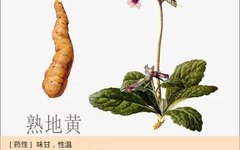Rehmannia glutinosa, known in traditional Chinese medicine (TCM) as 熟地黄 (Shú Dì Huáng), is the tuber of the plant belonging to the family Scrophulariaceae. It is processed through steaming and drying. This herb is known for its ability to nourish blood, enrich yin, and replenish essence. It is primarily used to treat conditions such as blood deficiency, irregular menstruation, excessive bleeding, kidney yin deficiency, soreness in the lower back and knees, night sweats, seminal emission, dual deficiency of essence and blood, dizziness, and premature graying of hair.

Pharmacological Effects
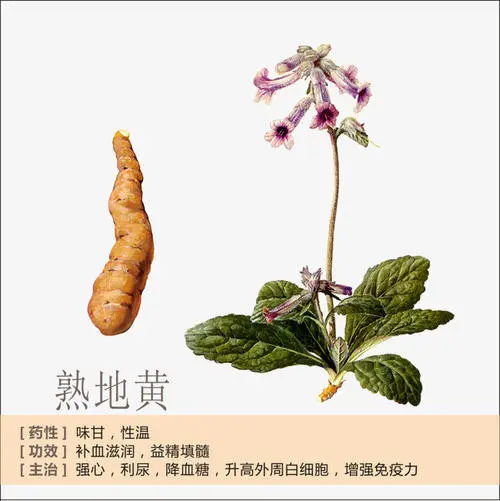

【Main Components】:Contains iridoids, rehmanniosides, mannitol, vitamin A-like substances, carbohydrates, and amino acids.
【Processing】:1. Wine-processed Rehmannia: Take clean raw Rehmannia, mix with yellow wine, place in a stewing pot, seal tightly, and steam over water until fully cooked or steam in a suitable container until the surface is black and glossy, until the yellow wine is completely absorbed. Remove and dry until the outer skin is slightly dry, cut into thick slices, and dry. For every 100 kg of raw Rehmannia, use 30-50 kg of yellow wine. Wine-processed Rehmannia is used for nourishing yin and replenishing blood.
2. Steamed Rehmannia: Take clean raw Rehmannia, place in a wooden steamer or other suitable container, and steam until the inside and outside are black and glossy. Remove, dry until 80% dry, cut into thick slices, and dry. Steamed Rehmannia is used for nourishing yin, replenishing blood, and enriching essence.
3. Ginger-processed Rehmannia: Take fresh ginger, wash and pound into a paste, add 5 kg of water, and pound for a long time to extract juice. Pour the ginger juice into a jar, add ground cardamom, white wine, and Rehmannia juice, and mix well with a wooden stick. Immediately add the dried Rehmannia, mix thoroughly, and steam for 4 hours until it turns black, tastes sweet like syrup, and has a strong aroma. Remove and dry or dry over low heat. For every 100 kg of raw Rehmannia, use 5 kg of white wine, 3 kg of fresh ginger (with 5 kg of water), 1 kg of ground cardamom, and 10 kg of Rehmannia juice.
4. Cardamom-processed Rehmannia: Take clean raw Rehmannia, mix with yellow wine and ground cardamom, place in a copper pot or other suitable container, seal tightly, and heat over a strong fire, stewing for about 48 hours until the inside and outside are pitch black and hollow. Remove, dry until 80% dry, cut into thick slices, and dry. For every 100 kg of raw Rehmannia, use 30-50 kg of yellow wine and 1 kg of ground cardamom.
5. Charred Rehmannia: Take Rehmannia slices and stir-fry in a pot over a strong fire until they puff up, the surface turns black, and the inside turns brown. Spray with a little water, continue to stir-fry until the moisture evaporates, place in a suitable container, seal tightly, and extinguish any embers. Remove and let cool. Used for nourishing blood and stopping bleeding.
【Properties and Flavor】:Sweet in taste, slightly warm in nature;
【Meridians Entered】:Enters the liver and kidney meridians;
【Functions】:Nourishes blood, enriches yin, and replenishes essence.
【Indications】:1. Used for blood deficiency, irregular menstruation, excessive bleeding, kidney yin deficiency, soreness in the lower back and knees, night sweats, seminal emission, dual deficiency of essence and blood, dizziness, and premature graying of hair.
2. In Western medicine, it is indicated for anemia due to heart and liver blood deficiency, chronic nephritis, hypertension due to liver and kidney insufficiency, deficiency of essence and blood, kidney tuberculosis, hyperthyroidism, central retinal inflammation, diabetes due to kidney yin deficiency, and pulmonary tuberculosis due to yin and blood deficiency.
【Precautions】:1. Rehmannia is warm in nature, so it is not suitable for long-term use in cases of external heat, internal heat, or excess heat conditions; diabetic patients should avoid using it in large amounts for long periods; patients with nasopharyngeal cancer, thyroid cancer, and breast cancer should avoid it.
2. Rehmannia can be greasy and obstruct the stomach, so it is not suitable for long-term use in cases of qi stagnation, phlegm accumulation, spleen deficiency, abdominal distension, or loose stools; patients with angina should use it cautiously; patients with simple obesity should avoid it.
3. Rehmannia has a blood sugar-lowering effect, so it is not suitable for long-term use in large amounts for patients using insulin or those with hypoglycemia.
4. For nourishing blood and enriching yin, it is advisable to use it with spleen-strengthening herbs, and the charred form can be used.
5. Rehmannia is greasy in nature, which can obstruct the stomach, so it is advisable to use it with Chen Pi (Aged Tangerine Peel), cardamom, etc., to strengthen the stomach, promote digestion, and enhance the efficacy of the herb.
6. Mixing cardamom with Rehmannia can reduce its greasy nature.
7. Avoid using copper or iron utensils for decocting the herb.
【Dosage and Administration】:For internal use: decoction, 10-30g; or in pills or powders; or prepared as a syrup, or soaked in wine.
【Contraindications】:Dietary contraindications: avoid scallions, garlic, radishes, non-scaled fish, pig’s blood, and strongly alkaline foods such as grapes, tea, wine, kelp sprouts, and kelp.

Identification of the Herb
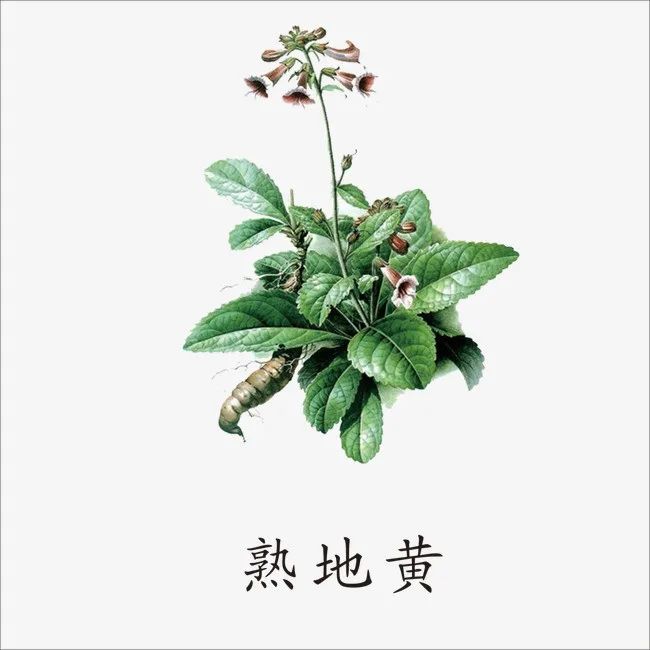
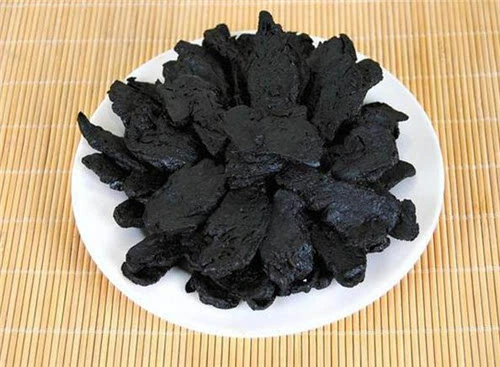


Fresh Rehmannia, Raw Rehmannia, Steamed Rehmannia, Wine-processed Rehmannia, Charred Raw Rehmannia, Charred Rehmannia:
Fresh Rehmannia contains more juice, has a sweet-bitter taste and cold nature, primarily used for clearing heat, generating fluids, and cooling blood to stop bleeding.
After processing and drying, it becomes Raw Rehmannia (Dried Rehmannia), which has a sweet taste and cold nature, primarily used for clearing heat, cooling blood, and nourishing yin and generating fluids.
After steaming, Rehmannia becomes thick and flavorful, its nature changes from cold to warm, its taste from bitter to sweet, and its function shifts from clearing to tonifying, primarily used for nourishing yin, replenishing blood, and enriching essence.
In other words, through special processing methods, Rehmannia has transformed from a heat-clearing and blood-cooling herb into a blood-tonifying herb.
However, steamed Rehmannia has the drawback of being greasy and obstructing the spleen, but when processed with wine, its nature becomes warm, primarily tonifying yin and blood, and the wine helps to enhance the medicinal properties and promote blood circulation, making it more beneficial for blood tonification without being greasy.
Charred Raw Rehmannia is primarily used for cooling blood and stopping bleeding, effective for various bleeding conditions caused by blood heat, such as hemoptysis, epistaxis, hematochezia, hematuria, and excessive menstrual bleeding.
Charred Rehmannia is primarily used for nourishing blood and stopping bleeding, suitable for excessive menstrual bleeding or deficiency-related bleeding.



Medicinal Cuisine and Dietary Therapy
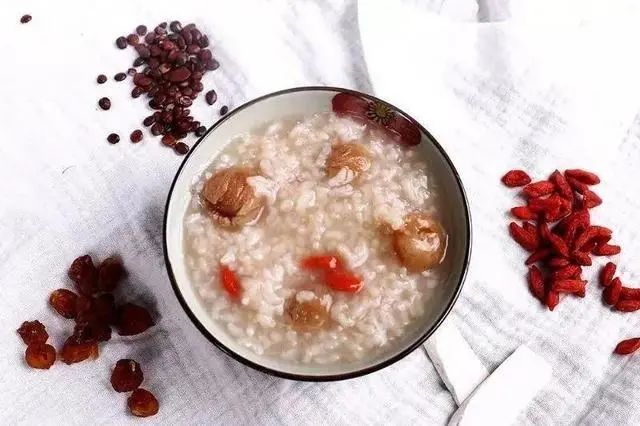
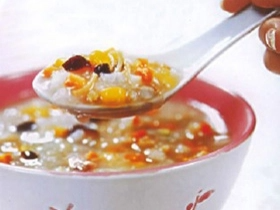


He Shou Wu and Rehmannia Porridge:
1. Efficacy: Nourishes the kidneys, resists aging, nourishes the liver, and replenishes blood. Suitable for kidney and liver deficiency, yin and blood deficiency, dizziness, tinnitus, premature graying of hair, anemia, etc.
2. Ingredients: 30g of prepared He Shou Wu, 15g of Rehmannia, 100g of rice, and appropriate amount of sugar.
3. Method: First decoct the He Shou Wu and Rehmannia. Strain to obtain the juice, wash the rice clean, pour the medicinal juice into the rice, and cook over low heat until it becomes a thin porridge. Add sugar when almost cooked.
4. Usage: Take warm, 1-2 times daily. Avoid if experiencing loose stools.

Scan to get more exciting content
Article source: China Medical Information Query Platform (please delete if infringing)
Image source: Internet (please delete if infringing)

